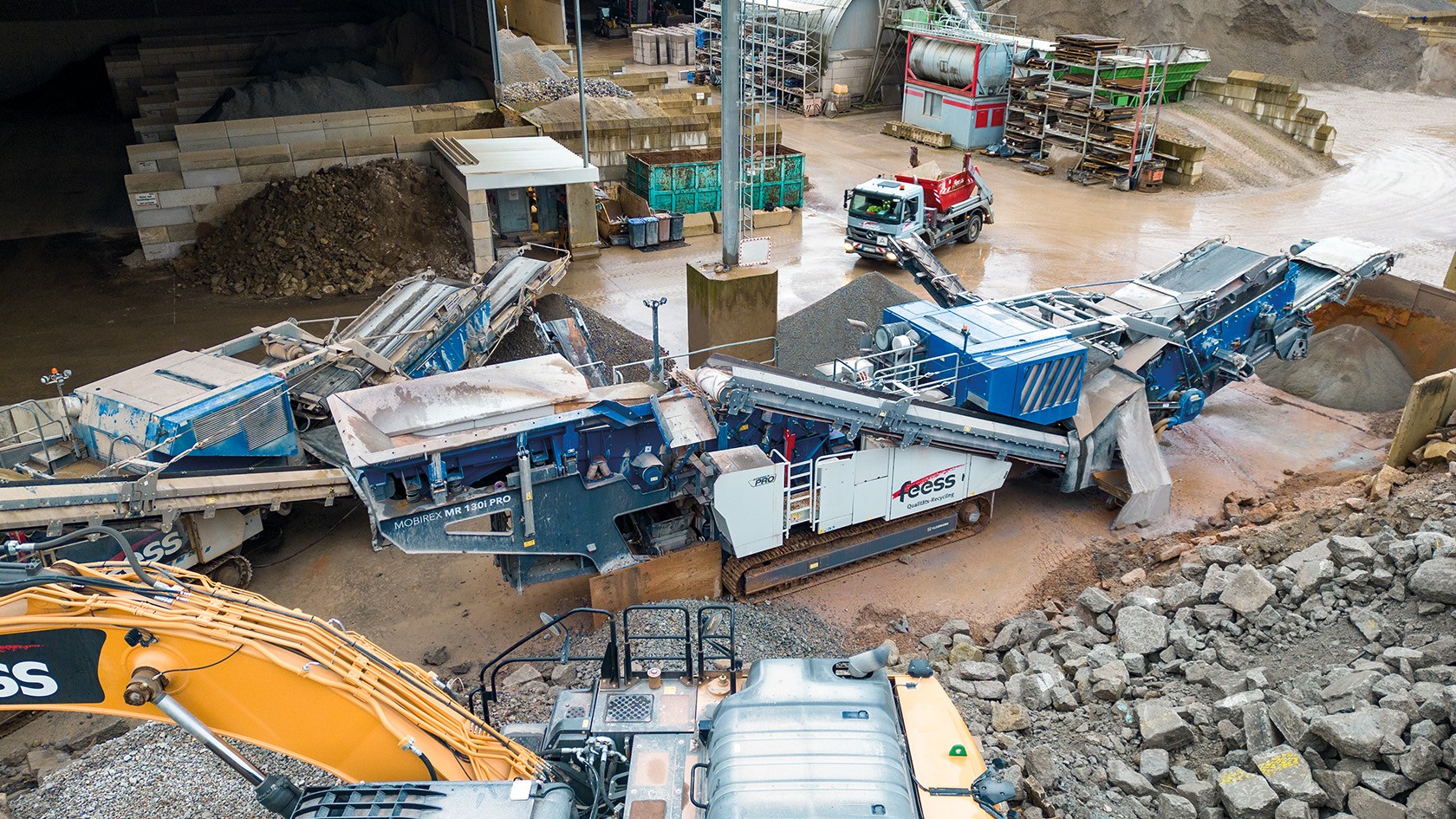What role does the impact crusher play in your recycling process?
W. Feess: For us, the plant is an extremely important module in the processing of the demolished concrete material. Up to now, we were already using a Kleemann impact crusher here. A screening unit was added to the smaller MOBIREX MR 130i EVO2. We still use the MR 130i EVO2, in some instances also directly on construction sites. It is practical that the parts are compatible. This makes it easier to store and organise spare and wear parts.
The new MR 130i PRO requires a similar amount of fuel as the previous MR 130 EVO2, roughly 35 litres per hour. But in the past we also had to refuel the screening plant. This was between 14 and 16 litres. Today we save on this fuel completely. And not only that: with the MR 130i PRO we achieve up to 20% more output, which is enormous with this fuel consumption. The plant is also equipped with wind sifters, which helps with the final product quality. We are currently in the process of optimising the settings of the wind sifters to our process.
The low consumption played into the hands of the climate-friendly alignment of the company. The plant can also be operated entirely by electricity. Are you planning for the future?
W. Feess: With its low consumption the plant fits very well with our overall concept. As we consume 14 to 16 fewer litres of fuel with the new setup, we are already saving many tonnes of CO₂. The option to be able to operate the plant using electricity was a key criterion for us. However, for this purpose we have to expand our transformer station, i.e. the power supply. There are already discussions and thoughts on how this can be realised. We are also considering expanding our photovoltaic surfaces. It would be great if we were able to operate the plant with our own electricity, some of it at least.





